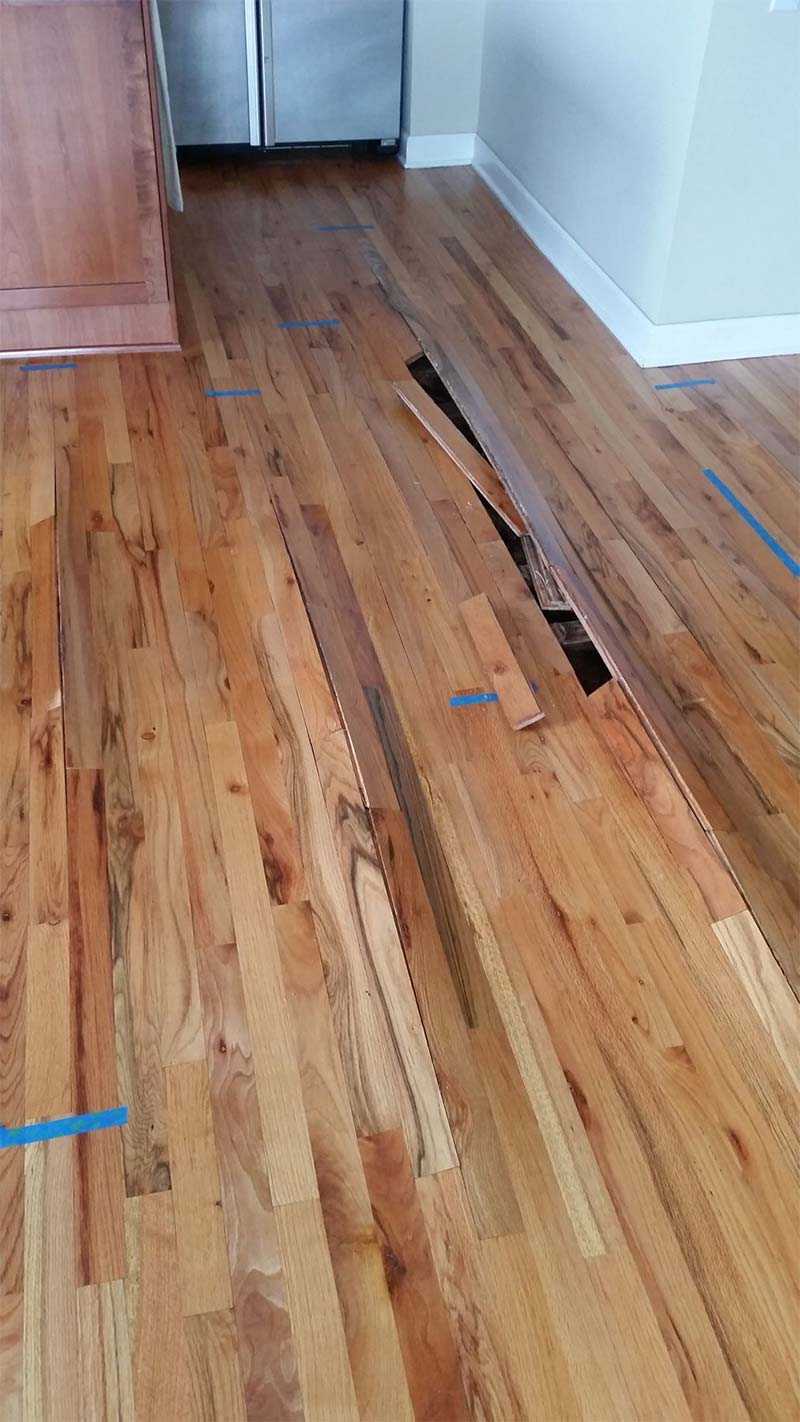Water damage wreaks havoc on wooden floors, compromising their structural integrity and aesthetic value. While the severity of damage varies depending on the extent of water penetration, prompt action is crucial to prevent permanent harm. This comprehensive guide will equip you with the knowledge and practical steps to effectively fix water-damaged wooden floors, restoring their original beauty and functionality.

Image: parquetave.com
Understanding Water Damage on Wooden Floors
Water exposure can lead to a range of issues, including:
- Buckling: The presence of excess moisture causes the wood fibers to expand, resulting in buckling and warped planks.
- Cupping: Water absorption causes the edges of the planks to lift upward, creating a cupped appearance.
- Discoloration: Water stains can penetrate the wood, leaving unsightly marks and compromising the original finish.
- Rot: Prolonged moisture exposure leads to the growth of mold and mildew, causing the wood to rot and weaken.
Steps to Restore Water-Damaged Wooden Floors
1. Identify the Source and Stop the Leak:
Addressing the source of water damage is paramount. Identify and stop the leak, whether it’s a burst pipe, roof leak, or appliance malfunction.
2. Remove Excess Water:
Use absorbent towels or a wet/dry vacuum to remove as much standing water as possible. Open windows and doors to promote ventilation and allow the floor to dry.
3. Inspect the Damage:
Carefully assess the extent of water damage, paying attention to the condition of the planks, subfloor, and joists. Determine the areas that require repair or replacement.
4. Dry the Floor Thoroughly:
Use a dehumidifier to extract moisture from the air and speed up the drying process. A fan can also assist in circulating air and removing excess humidity.
5. Repair Buckling and Cupping:
For minor buckling, remove the damaged planks and replace them with new ones. For severe buckling, consider using a floor jack to lift the affected area and remove excess moisture.
6. Address Discoloration and Rot:
Sand away the stained areas of the wood to reveal the undamaged surface beneath. In case of rot, you may need to replace the affected planks or entire sections of the floor.
7. Restore the Finish:
Once the floor is dry and repaired, it’s time to restore the finish. Sand away any splinters or unevenness, then apply a new layer of wood sealant or varnish.
8. Protect Against Future Damage:
- Install a vapor barrier below the subfloor to prevent moisture penetration from the ground.
- Use a moisture-resistant sealant in wet areas, such as bathrooms and kitchens.
- Place mats in areas prone to water spills.

Image: dragon-upd.com
How To Fix Wooden Floor Water Damage
Conclusion
Water damage on wooden floors can be a daunting challenge, but with the right knowledge and prompt intervention, restoration is possible. By following the steps outlined in this guide, you can effectively repair damaged planks, address discoloration and rot, and restore your wooden floors to their former glory. Remember, professional assistance may be必要 for severe water damage, ensuring a thorough and safe repair process.